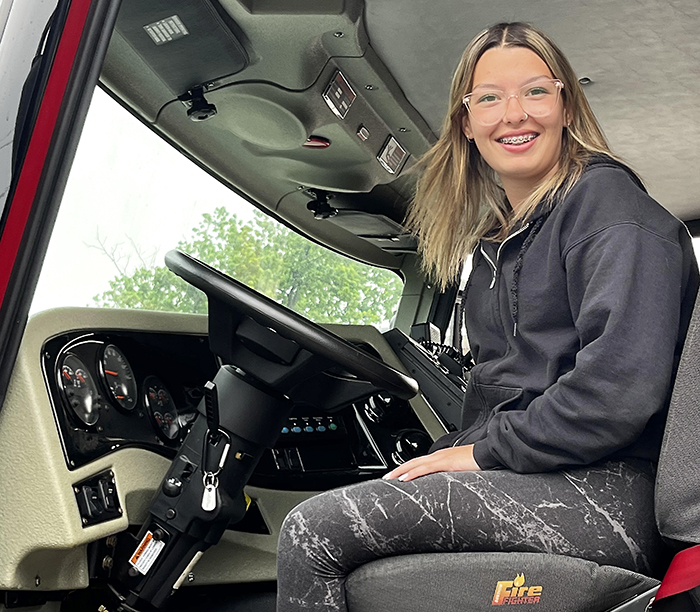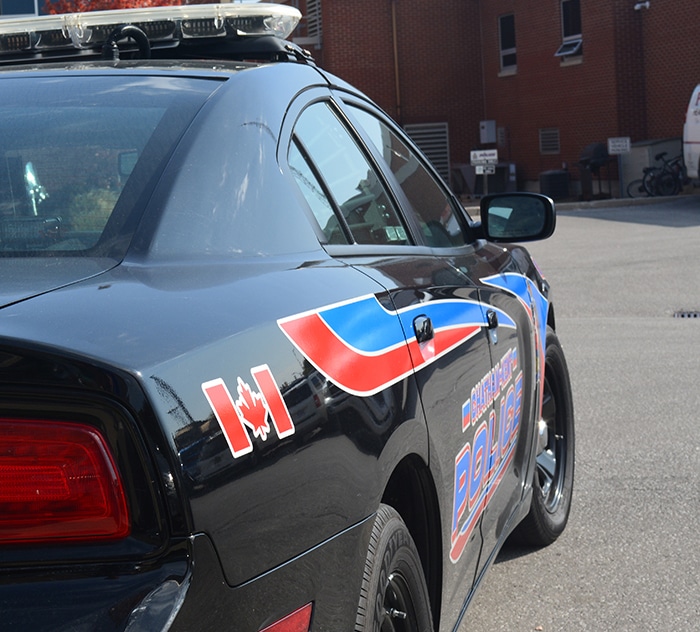
By Michael Bennett
Local Journalism Initiative Reporter
The Ridgetown Independent
There were no graduation gowns or diplomas, just some flashing red lights and a few blasts from a fire truck siren to mark the final day for a unique class at Ridgetown District High School on a recent Thursday morning.
Students in RDHS’s Grade 10 Civics & Careers class participated in a pilot program with Chatham-Kent Fire & Rescue aimed at introducing firefighting and first responders as a possible career choice – including opportunities to serve as a volunteer firefighter in Ridgetown.
The CKFR’s Stop, Drop … This Is How We Roll program brought full-time and volunteer firefighters, police and paramedics to RDHS every Thursday from the first of March until early June.
“It’s a career exploration program we thought would be of a lot of benefits for the high school in promoting safety but also tied into careers,” said Whitney Burk, public education officer for the CKFR.
The program, conducted by Burk, said Ashley Naclerio, executive assistant to chief Chris Case, brought personnel from all facets of the fire department into the school, including full-time and volunteer firefighters, training and education officers and inspectors to provide hands-on demonstrations of their roles.
Members of Station 11 Ridgetown, who set up the aerial ladder for the closing session, were involved in the program.
“We came here for a couple of demonstrations, one with the auto extrication equipment,” said Station 11’s Henry VanderGriendt. “We did a hands-on with the tools, showed how we operate them and let the kids feel how heavy they are.”
Along with the hands-on approach, Burk said the program is also intended to spark interest in the students considering a future career as a first responder, even on a volunteer basis.
Burk said volunteer firefighters all have full-time jobs, including many who are first responders as police officers or EMS paramedics.
“We have over 350 volunteer firefighters in our community, and what makes you become a volunteer is normally because of somebody you know or someone in your family is a volunteer,” Burk said. “Normally, we don’t get a lot of people who become interested just by accident.”
“We want to get people interested, so we want to get into the schools and tell people exactly how you can become a volunteer firefighter,” she said.
Burk said the CKFR is trying to diversify the fire department by involving more females and cultures in both the career and volunteer forces.
She said there are currently two full-time females and about 10 volunteer firefighters in the CKFR.
One female student in the RDHS class said she was interested in becoming a first responder as a result of this program.
“From this experience, I can say I would consider becoming a volunteer firefighter,” said Kaylynn Ferron, a Civics & Careers class student. “I’ve grown up around a lot of family and people (who are volunteers). I’m used to what they have to go through. This is something that is realistic.”
Ayoun Basharal, the class teacher, said another female student expressed an interest in becoming a firefighter.
“She said she never thought girls could become volunteer firefighters,” said Basharal. “That’s a huge part of our school, making it realistic that things are not just for one gender, but for both.”
While not everyone in the class will pursue a full-time or volunteer firefighter career, the program made some lasting impressions.
“They shared their knowledge and experience with us in a way that was engaging and educational,” Brianna Bedell said of the guest instructors.





